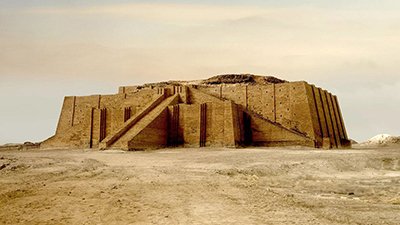
Feedback: Why Are the Gospels of Matthew and John Different?
A straightforward reading of the Gospels presents numerous differences in perspective and detail that supplement each other but do not contradict.
I recently read the article “Who Really Carried the Cross of Jesus?” by Ty Benbow. Although I absolutely agree that our focus as Christians should not be supposed inconsistencies as they can easily side track us from the gospel, I also feel it is very important to take skeptics questions seriously, and sometimes even say “I don’t know.” I understood Ty’s answer to the skeptics question as: Jesus carried the cross to the edge of the city, and Simon carried it from there. He used this verse to support it “
So they took Jesus and led Him away. And He, bearing His cross, went out.(John 19:16–17, emphasis added).” The full verse 17 reads “And He, bearing His cross, went out to a place called the Place of a Skull, which is called in Hebrew, Golgotha.” “Jesus went out . . . to a place called . . .” I fear Ty’s (partial) use of the verse misses the context and distorts the truth. I don’t know how to reconcile the two accounts, and I think at times, it’s ok not to have an answer.
– R.W., Chattanooga, TN
R.,
Thank you for your comments.
God has proven Himself faithful time and time again, showing us there is always a legitimate answer to the difficulties of Scripture.
Answers in Genesis exists to clearly and boldly communicate the truth and authority of Scripture. Within this mission is a desire to equip others to do the same. Thus Answers in Genesis, by definition, exists not only to take skeptics’ questions seriously, but also to show that God’s Word does indeed provide answers and that there are no contradictions in Scripture. While it may be sometimes acceptable to say “I don’t know” as a response to such questions, it is never acceptable to say God’s Word contains an error. God has proven Himself faithful time and time again, showing us there is always a legitimate answer to the difficulties of Scripture.
In this way, equipping others to communicate the truth and authority of Scripture includes addressing aspects of God’s Word that become misconstrued or are poorly taught. What we are discovering more and more throughout academic circles today is an unwillingness among scholars and educators to assume that God meant exactly what He said. As a result, questions of biblical inerrancy, inspiration, and authority become the center of discussion, even in the midst of proven human fallibility. As with so many different issues, it comes down to a matter of man’s word versus God’s Word. So, we strive to answer the dismissive attitude and attempts of skeptics to marginalize the perfect Word of God.
God does nothing by accident. He means everything that He says or does. For this reason, whenever Christians approach a scriptural passage that we perceive as difficult, our first assumption should not be to doubt the author. The issue of “Who Really Carried the Cross of Jesus?” is a perfect example of what appears to be a contradiction but can be easily resolved.
Do the Gospel Accounts Ever Contradict Each Other?
When reading the Gospel accounts of Matthew and John regarding the execution of Jesus, the reader is faced with two choices. The reader can either believe there is an inconsistency, or he can believe God wrote the good news with express intent. As is the case with many apparent differences in the Gospel accounts, God directed each human author to include those details that are pertinent to each Gospel narrative.
God chose to communicate the details of Jesus Christ’s journey to crucifixion as illustrated in both Matthew and John. Also, there is no distortion of truth between John’s account and Matthew’s account. It is a simple matter of perspective and purpose. The accounts are complimentary, not contradictory.
As an example, imagine if a family of four took a road trip. Suppose the father drives the car for a notable distance with both children awake, and then the mother assists him in the driving responsibilities while one child sleeps and the other child remains awake. Neither child would be incorrect in their observations if one of them later records that their father drove them out to a destination while the other child records that their father took them some distance and then their mother assisted him. No one would argue the legitimacy of either report, especially if either child’s point of view was in some way limited (as was very likely in the accounts of both Matthew and John given the lack of mobility in Jerusalem on Passover week). No one would contest the report of either child. Similarly, a straightforward reading of the Gospels presents numerous differences in perspective and detail that supplement each other but do not contradict.
Take Another Look at the Answer
I’d like to address your concern about the full context of John 19:17, which states, “And He, bearing His cross, went out to a place called the Place of a Skull, which is called in Hebrew, Golgotha.
” At first, this seems to suggest Jesus carried His cross the whole way, which would contradict Matthew’s account. However, there is a simple answer already given in the original article that you may have missed (I have italicized for emphasis):
Notice, then, in Matthew’s account that as they came out of the city, the Romans elected someone else to carry the patibulum for an ever-weakening Jesus. This implies that Jesus had been carrying the crossbeam Himself from the location of His conviction to the gates of the city. Now, as we observe John’s account, the so-called “inconsistency” dissipates. John records that as Jesus journeyed out of the city, He bore His own cross.
This is the very same observation made by Matthew. He recorded that Simon the Cyrene was ordered to carry the crossbeam from outside the gate to Golgotha. Matthew simply provides an extra detail to the same observation made by John.
Jesus was still bearing his cross as he “went out
” of the city, as clearly stated in John 19:17. What John didn’t record but Matthew did include is that outside the city (“as they came out
” in Matthew 27:32) Simon was compelled to carry Jesus’s cross. John and Matthew both agree that Jesus carried His cross out of Jerusalem. The context of John 19:17 still allows for the extra detail provided by Matthew.
Many People Just Do Not Want to Believe God’s Word
We live in a culture today where something as simple as two accurate accounts of an event recorded from different vantage points becomes the basis for an attack on the inerrancy of Scripture and its entire message. At Answers in Genesis, we commit our lives to the strength and value of the gospel message in its entirety. The problem is not with the text of Scripture but with our understanding of it. Therefore we follow the command of the Apostle Paul, “Be diligent to present yourself approved to God, a worker who does not need to be ashamed, rightly dividing the word of truth
” (2 Timothy 2:15).
We believe God meant what He said. We believe what He said is without flaw. Most importantly, we believe with the help of the Holy Spirit, “‘you shall know the truth, and the truth shall make you free
’” (John 8:32).
Sincerely,
Ty Benbow
Recommended Resources

Answers in Genesis is an apologetics ministry, dedicated to helping Christians defend their faith and proclaim the good news of Jesus Christ.
- Customer Service 800.778.3390
- Available Monday–Friday | 9 AM–5 PM ET
- © 2025 Answers in Genesis




